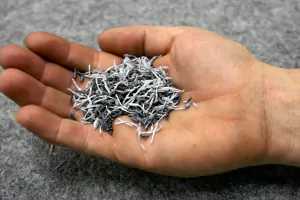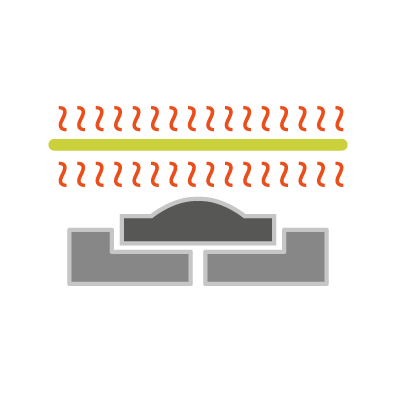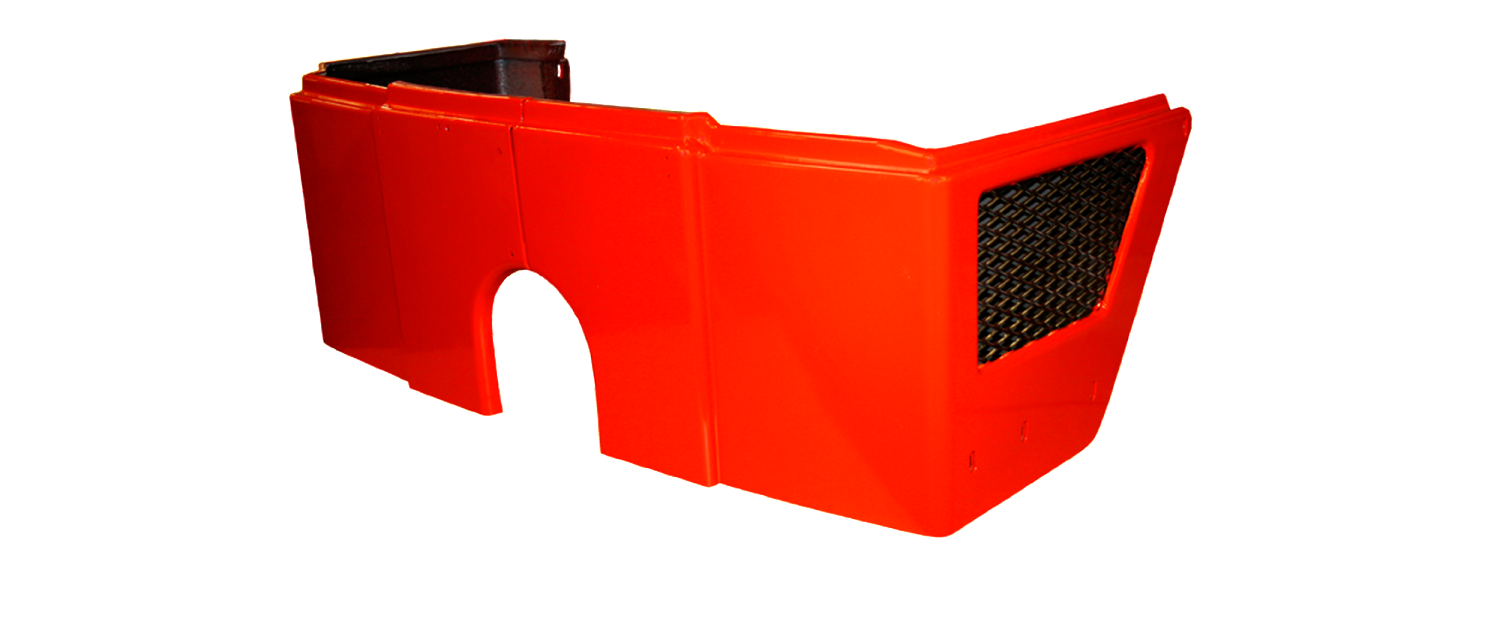Competitive
Vacuum forming is a competitive method in many different respects, in particular for larger products in small and medium-sized production runs. The manufacturing process has a limited environmental footprint as the material does not contain any solvents; neither does it cause any harmful emissions.
Excess material is ground into granulate which can be recycled to 100%.
The advantages of plastics
Plastics are materials with unique properties and benefits that have made them into favourite materials for many creators, inventors and designers. Plastics are myriad of different materials with varying properties that you can select as required. Elastic and stretchable, soft as cotton, harder than steel, bullet-proof glass, sliding properties, UV-resistant etc.
1. Vacuum forming tool
The vacuum forming tool is placed in a vacuum forming machine.
2. Heating
The sheet to be formed is heated from above and below to between +170-210 degrees C.
3. Pre-expansion
The sheet to be formed is heated from above and below to between +170-210 degrees C.
4. Vacuum forming
Using the vacuum the plastic material is formed over the forming tool.
5. Cooling
After cooling the forming tool moves downwards and the product is then ready for after-machining.
Sounds interesting? Do you want to know more?
Our manufacturing processes makes opportunities to countless
combinations of possibilities for your product.












